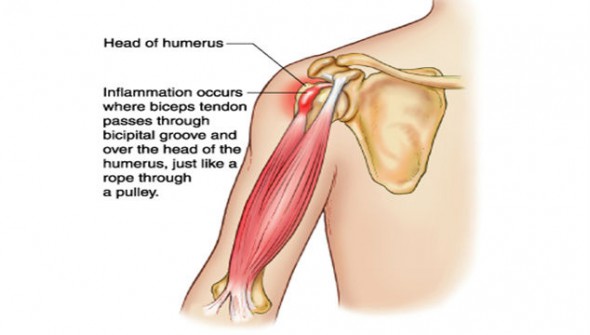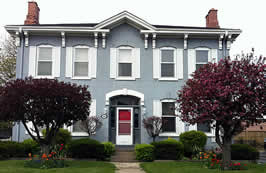
Tendinitis is an injury that, although prevalent in the modern world, tends to be poorly understood. In order to facilitate a clearer understanding of what tendinitis is, and which structures it affects, we must first discuss what a tendon is.
Think of a muscle as your body’s version of a bungee cord. The elastic part of the bungee cord represents the muscle belly, which provides the contractile force necessary to move the joints of your body. The hooks of the bungee cord would then represent your tendons, which anchor the muscle to the bones of your body.
The muscle belly is composed of striated contractile fibres (the easiest way to remember this is that muscle looks like steak, because steak is the muscle of cattle). The muscle belly is richly innervated, with an excellent blood supply that provides it with its characteristic red colour.
Tendons are striated as well, however they are composed of dense and immensely strong connective tissue. The tendon hooks on to a bone through a connection which almost resembles and behaves like Velcro, which are called Sharpey’s Fibres. Lastly, the tendon itself is surrounded by a sheath called the teno-synovium, which allows the tendon to move back and forth like a sword in a scabbard.
As with all aspects of the human body, once one knows how the structures are supposed to work then we can discuss what happens when they are not working. Thus, injuries to the tendons of your body may occur in the teno-synovium, the Sharpey’s Fibres, or in the tendon tissue itself.
In most cases in health care when you see “-itis” at the end of any word, it generally refers to inflammation or infection. Tendinitis, therefore, refers to an inflammation of a tendon. Every muscle of your body has at least one associated tendon (of varying structure), thus any muscle in your body may experience tendinitis.
Teno-synovitis is an injury often associated with tendinitis. Although teno-synovitis is an injury to the sheath of the tendon, and not the tendon itself. Although they are separate injuries, tendinitis and teno-synovitis will often occur together due to their close proximity.
Causes of tendinitis are many and varied, however there are general patterns that present in patients. Repetitive motions are the most common cause of tendinitis presenting to Queen Street Chiropractic Centre. Working on the assembly line, sport-specific movements ( especially golf ), jogging, computer work etc. are all likely sources of chronic or long-term tendinitis.
On a side note, teno-synovitis of the muscles and tendons that move the thumb is a condition referred to as De Quervain’s Syndrome. De Quervain’s Syndrome is a chronic condition that may take years to develop, and is very painful and difficult to treat. Although historically De Quervain’s Syndrome was relatively rare and specific to only a few types of employment, the incidence is now on the rise due to increased cell phone use and texting. Indeed, you may have heard of De Quervain’s Syndrome being referred to as “BlackBerry Thumb“.
The simplest method of preventing tendinitis is to halt any repetitive motions which may lead to tendinitis. Although in theory this method works, most of us cannot quit our jobs, and most of us do not want to quit playing whichever sport or activity was leading to tendinitis. Thus, the method of choice for preventing tendinitis are stretching and strengthening exercises to the muscles that are being exerted in the repetitive manner.
Treatment of tendinitis varies with the severity of the injury. Chronic untreated tendinitis may result in the use of cortico-steroid injections or even surgery. Non-Steroidal Anti-Inflammatory Drugs (NSAIDS) are often prescribed, however there efficacy is questionable as they merely treat the symptoms and not the cause of the problem as well as leading to potentially harmful side effects.
At Queen Street Chiropractic Centre, the Doctors have extensive training and experience in diagnosing and managing tendinitis and teno-synovitis. Through manipulation of the joint complexes involved, soft tissue therapy of the surround musculature, and prescribed strengthening and stretching exercises the Doctors will work with you to facilitate a return to healthy activity following your injury. Furthermore, the Doctors will be able to provide you with advice on biomechanical and ergonomic alterations which could benefit you in the future.
Please feel free to contact Queen Street Chiropractic Centre today to book an appointment.
Dr. Korey Jay, BSc DC
 Did you like this article? Please consider
Did you like this article? Please consider  96 Queen Street
96 Queen Street
Leave a Reply